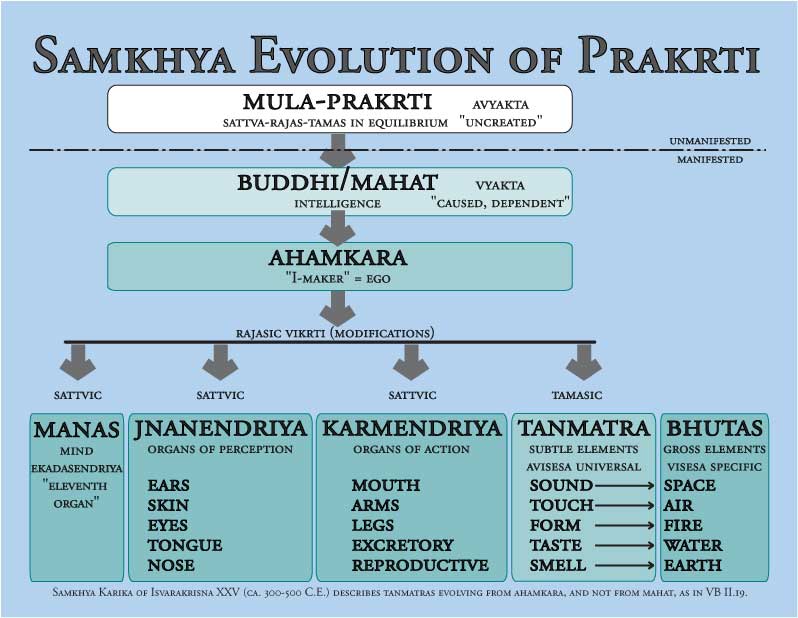Knowledge and Sight of the Soul

Our last Yoga Sutra Discussion Group was a great opportunity to recap the Cosmology of yoga and the very essence of of “why” we practice. To understand the 36th (and sometimes 35th depending on translation) sutra in the third chapter of The Yoga Sutras of Patanjali we have to remember the relationship of purusa (soul, Self, seer, knower, pure consciousness) with Prakrti (external Nature, individual self, sen, known, all the rest of consciousness that is disturbed by dualities and distractions).
Purusa stands apart from Prakrti, so all of the work we do in life and in yoga is within the realm of Prakrti. The layers of consciousness, apart from the pure undisturbed consciousness of purusa is part of Prakrti. The “discriminating factor” of the consciousness is called buddhi and in its balanced (sattvic) state, it is the layer of Prakrti that is the closest to purusa and can “know” purusa. This is why purusa and Prakrti are reliant on each other and we seek to merge them through yoga.
Yoga Sutra III.36 could most easily be described as looking in a mirror up close – no distraction, no dust, no distortion – if there long enough, the image and the person become indistinguishable and they “merge”. This is Prkakrti’s merging with purusa’s purity.
Within our discussion, I was struck at the change in perspective the Yoga Sutras actually take after the above integration happens. No longer does it seem that the “naturally super powers” (vibhutis) just arise from certain practices, but that after integration of the self, at will an individual is able to manipulate and utilize these powers. Hence the warning of III.38 that ultimately the powers are hinderances to our practice and “final goal”. At this point we might be freed from the bondages of Prakritic duality, but at will we can choose to dwell in it and use it for certain aims, so the Ego can once more become a danger and an obstacle.
In the next three sutras for our discussion on April 3, we see direct results of the integration with our purest of consciousness, being free from bondages of Nature. We will also look at another energetic element of our being – the vital winds of prana called vayus. All the below translations are from BKS Iyengar’s Light on the Yoga Sutras of Patanjali.
III.39 : Through relaxation of the causes of bondage, and the free flow of consciousness, the yogi enters another’s body at will.
III.40 : By mastery of the udana vayu (raises energy from the lower spine to brain), the yogi can walk over water, swamps and thorns without touching them. He/she can also levitate.
III.41 : By samyama (integration) on samana vayu (strokes gastric fire), a yogi glows like fire and his/her aura shines.
Join Us on Sunday, April 3 at 11:00am CST via ZOOM for discussion on the above. Below are some questions for contemplation…
- Within your practice of yoga, have you gained heightened sensory states or become more attuned to your body and mind in any way?
- With knowledge of your own self and space, do you feel like you are more sensitive or in tune with others? In what ways?
- Can you identify your influence over others – conscious or unconscious – and how do you utilize that influence?
- Can you sense the energetic connection of lightness, heaviness, heat, cold, etc…through your practice of asanas and pranayamas?
- Are others drawn to you in ways that you might attribute to your practice of yoga? Personality changes? Physical and mental and emotional changes?
- Do you feel like yoga has helped you navigate certain obstacles? Physical, mental, emotional??
SIGN UP NOW !! Free and welcome to all who are interested!